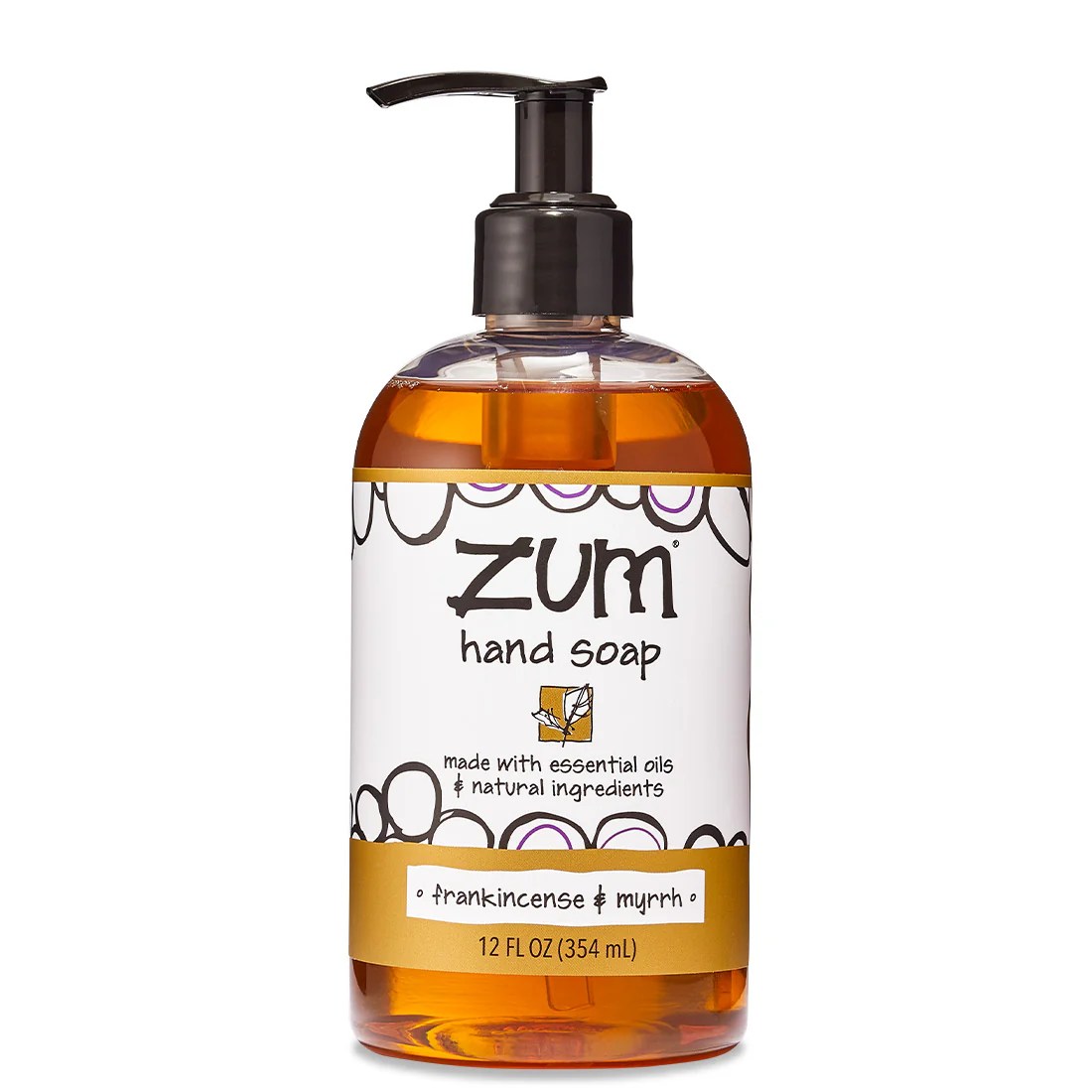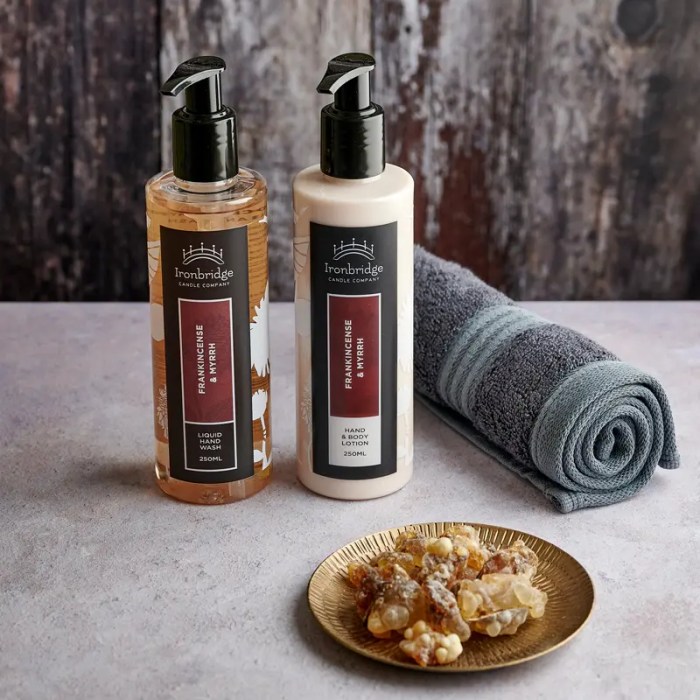Unveiling the ancient secrets of frankincense and myrrh, this discourse explores their captivating history, cosmetic applications, and their transformative role in soapmaking. Frankincense and myrrh hand soap branch and vine, an aromatic masterpiece, embodies the essence of these precious resins, offering a sensory experience that transcends time.
Their cultural and religious significance, deeply intertwined with ancient civilizations, adds a layer of mystique to these aromatic treasures. From their use in sacred rituals to their medicinal properties, frankincense and myrrh have left an enduring mark on human history.
Frankincense and Myrrh in History

Frankincense and myrrh, aromatic resins obtained from trees in the genus Boswelliaand Commiphora, respectively, have been highly prized for centuries for their medicinal, cosmetic, and religious significance.
Archaeological evidence suggests that frankincense and myrrh were used in ancient Egypt as early as 3000 BC. The Egyptians employed them in religious ceremonies, embalming practices, and cosmetics.
In ancient Greece and Rome, frankincense and myrrh were used as incense, perfumes, and medicines. Theophrastus, a Greek philosopher and naturalist, wrote extensively about their medicinal properties, including their ability to treat wounds, infections, and digestive ailments.
In the Bible, frankincense and myrrh are mentioned as gifts brought by the Magi to the infant Jesus. They were also used in the construction of the Tabernacle and the Temple in Jerusalem.
Frankincense and Myrrh in Soapmaking: Frankincense And Myrrh Hand Soap Branch And Vine

Frankincense and myrrh have several properties that make them beneficial for soapmaking.
- Antibacterial and antifungal properties:Frankincense and myrrh have antimicrobial properties that can help to cleanse the skin and prevent the growth of bacteria and fungi.
- Anti-inflammatory properties:Frankincense and myrrh have anti-inflammatory properties that can help to soothe and reduce skin irritation.
- Moisturizing properties:Frankincense and myrrh contain compounds that can help to moisturize the skin and prevent dryness.
In addition to their beneficial properties, frankincense and myrrh also contribute to the scent, lather, and moisturizing qualities of soap.
Here are some examples of different soap recipes that incorporate frankincense and myrrh:
- Frankincense and Myrrh Castile Soap:This soap is made with olive oil, coconut oil, and lye. It is scented with frankincense and myrrh essential oils.
- Frankincense and Myrrh Goat Milk Soap:This soap is made with goat milk, olive oil, and lye. It is scented with frankincense and myrrh essential oils.
- Frankincense and Myrrh Shea Butter Soap:This soap is made with shea butter, olive oil, and lye. It is scented with frankincense and myrrh essential oils.
Hand Soap with Frankincense and Myrrh

To make hand soap with frankincense and myrrh, you will need the following ingredients:
- 1 cup olive oil
- 1/2 cup coconut oil
- 1/4 cup lye
- 1/2 cup water
- 10 drops frankincense essential oil
- 10 drops myrrh essential oil
Instructions:
- Combine the olive oil, coconut oil, and lye in a heat-resistant container. Stir until the lye has dissolved.
- Add the water and stir until the mixture is well combined.
- Add the frankincense and myrrh essential oils and stir until the mixture is well combined.
- Pour the mixture into a mold and let it sit for 24 hours.
- Unmold the soap and cut it into bars.
- Let the soap cure for 4-6 weeks before using it.
- Use a soap mold with a branch and vine design.
- Pipe soap onto a soap base to create a branch and vine design.
- Use a soap cutter to cut soap into branch and vine shapes.
- Add dried leaves or vines to your soap.
- Embellish your soap with beads or other decorative elements to create a branch and vine design.
You can also add other essential oils or additives to your soap, such as lavender, rosemary, or vitamin E oil.
Branch and Vine Motif in Soap Design
The branch and vine motif is a popular design element in soapmaking. It is often used to symbolize growth, abundance, and fertility.
There are many different ways to incorporate the branch and vine motif into soap designs. You can use a variety of colors, shapes, and sizes to create your own unique designs.
Here are some ideas for incorporating the branch and vine motif into soap designs:
FAQ Section
What are the benefits of using frankincense and myrrh in hand soap?
Frankincense and myrrh possess antibacterial and antifungal properties, making them beneficial for cleansing and protecting the skin. Their soothing and moisturizing qualities help alleviate dry or irritated skin.
How does the branch and vine motif enhance the aesthetic appeal of hand soap?
The branch and vine motif symbolizes growth, abundance, and interconnectedness. Incorporating it into hand soap design adds a touch of nature-inspired elegance, creating a visually appealing and tactile experience.
Can I customize the scent of my frankincense and myrrh hand soap?
Yes, you can enhance the scent of your hand soap by adding a few drops of your favorite essential oils. Citrus oils like lemon or orange add a refreshing twist, while floral oils like lavender or rose provide a calming effect.